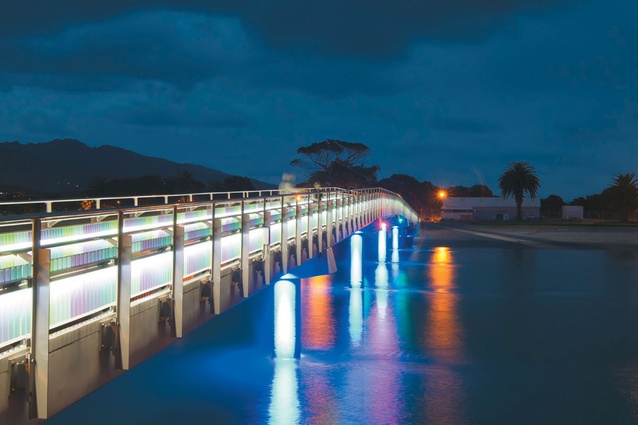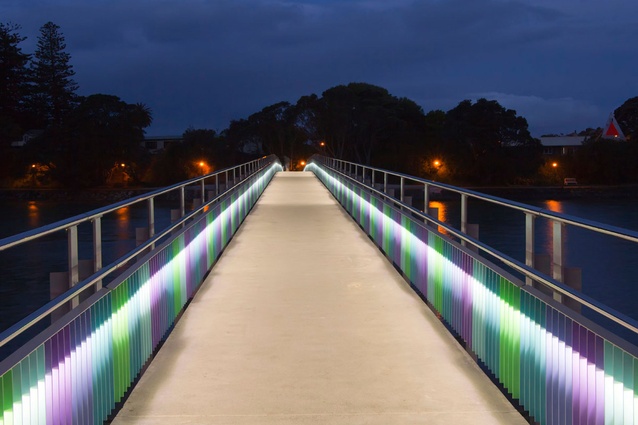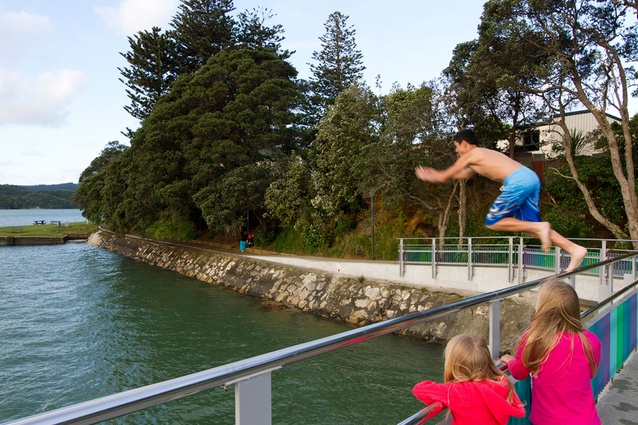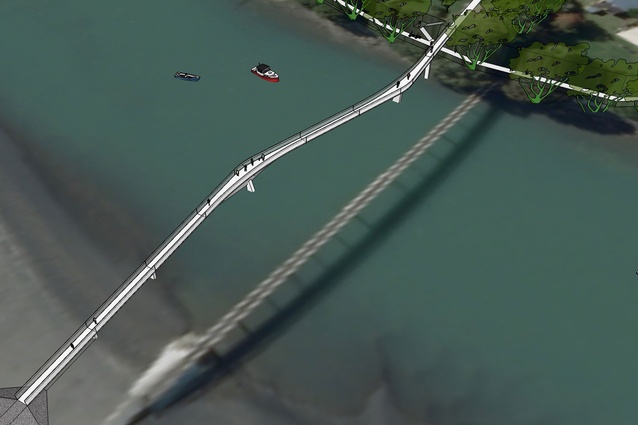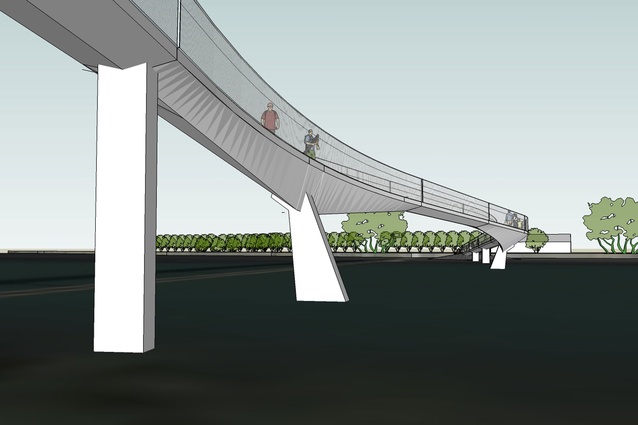Bossley Architects’ Kopua Footbridge in Raglan
The surfing town of Raglan has a new addition, the 150m-long Kopua footbridge designed by Bossley Architects and Aurecon Bridge Engineering Section.
The new Kopua footbridge replaces a dilapidated 50-year-old version over the estuary and links the Raglan township with the camping ground and facilities to the west of the river mouth. The new bridge was located alongside the old to enable connection to continue during construction.
During the concept design stage, Bossley Architects explored different options which had a variety of urban design implications at the township end of the bridge, offering various connections to the street pattern of the town. Public consultation produced resistance to a more sophisticated ‘curving’ bridge, favouring the ‘straight’ option instead.
The new bridge is higher than the old bridge, to enable more boat traffic underneath, and has fewer supports, minimising disruption to the sea floor. The balustrades were treated in a variety of colours to give the bridge a unique visual language, both during the day and also when artificially lit at night.
Jumping off Kopua footbridge into the estuary has renewed this national pastime for local children and holidaymakers alike.

